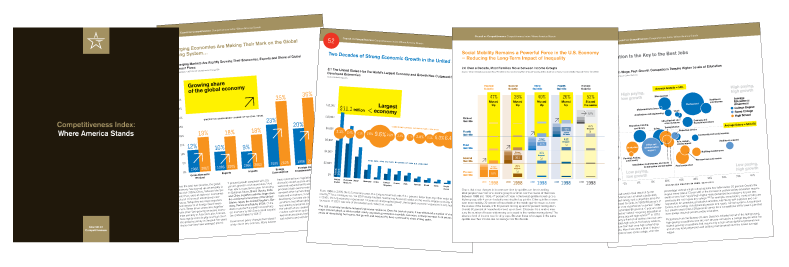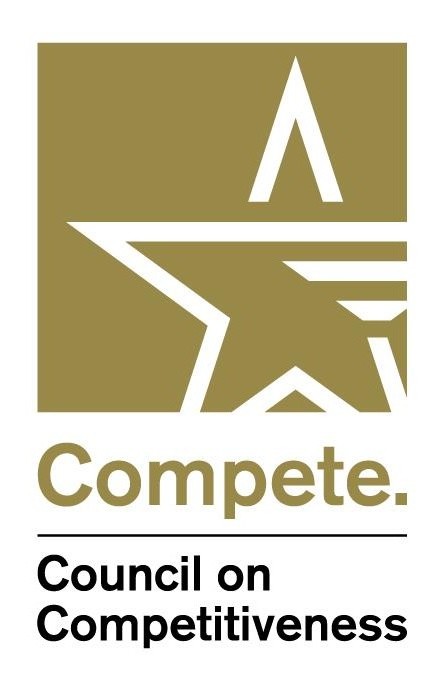
Competing successfully in global markets today demands even more speed, flexibility, specialization and innovation than ever before. All firms, large and small, must identify ways to become more innovative and more entrepreneurial. In the same way, regions will have to focus on creating the kind of fertile environment for entrepreneurial investment that will attract risk capital out of a global capital stream.
To better understand these trends, the Council has spent years developing benchmarking reports on workforce skills, manufacturing, financial markets, healthcare and infrastructure, to name a few. The Council’s Competitiveness Index, which measures America’s economic standing in the global economy, sets the gold standard in competitiveness benchmarking. The report is a wide-ranging assessment of the challenges the changing global economy presents for the future.
To better understand these trends, the Council has spent years developing benchmarking reports on workforce skills, manufacturing, financial markets, healthcare and infrastructure, to name a few. The Council’s Competitiveness Index, which measures America’s economic standing in the global economy, sets the gold standard in competitiveness benchmarking. The report is a wide-ranging assessment of the challenges the changing global economy presents for the future.
In 2011, the Council established the Economic Advisory Committee (EAC) to review and undertake additional economic analysis, as well as to re-define and re-shape its flagship Competitiveness Index. The EAC gathered 40 leading economists across industry, academia, labor, non-governmental organizations and think tanks to develop the sophisticated modeling and research necessary to understand the fundamental competitiveness drivers in the 21st century.
Since 2012, the Council's Clarion Call for Competitiveness has laid out a competitiveness agenda for policymakers, a roadmap to follow based on more than two decades of research and the insights of the nation’s leading corporate executives, academic and labor leaders, and national lab directors. The Clarion Call, released annually at the Council's National Competitiveness Forum, highlights key emerging trends and ongoing U.S. competitiveness challenges.
In 2013, the Council began offering letter grades on policymakers’ progress (or lack thereof) on its core recommendations. With this crucial step, the Clarion Call transformed into not just an assessment of the state of American competitiveness, but also an agenda to enable everyday Americans to build more prosperous lives, drive new innovations, and advance toward a more confident future.
Today, the story of where America stands is a hopeful one, but not without a few stumbling blocks along the path. There are tentative signs of resurgence. Quarterly indicators in late 2017 pointed to higher productivity and economic growth, continued low unemployment and modest wage gains. These are all positive signs, but are often tempered by other trend lines that caution against irrational exuberance.
For more information on where America stands, read the Council’s 2018 Clarion Call for Competitiveness.
For more information on where America stands, read the Council’s 2018 Clarion Call for Competitiveness.




